- Home
- slideshows
- miscellaneous
- 'Anthem' is the definition of a blockbuster video game, but that doesn't make it fun
'Anthem' is the definition of a blockbuster video game, but that doesn't make it fun
As a multiplayer-focused shooter, "Anthem" is a big departure from BioWare's earlier games.

Javelins, the awesome mechanized suits players pilot during the game, are the best reason to play "Anthem."
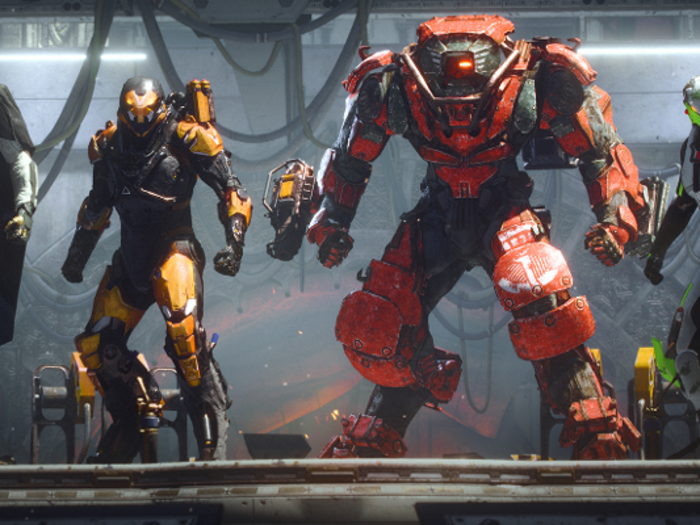
While the game's story doesn't offer much inspiration, the high-flying javelin suits provide plenty of excitement. Players can choose from four different types of Javelins, each of which has its own strengths and weaknesses.
The Storm and Ranger javelins have better flight control, while the Interceptor has better ground mobility and close-range attacks. The Colossus has defensive maneuvers and the strongest armor.
Players can customize their javelin's weapons and appearances to suit their taste.
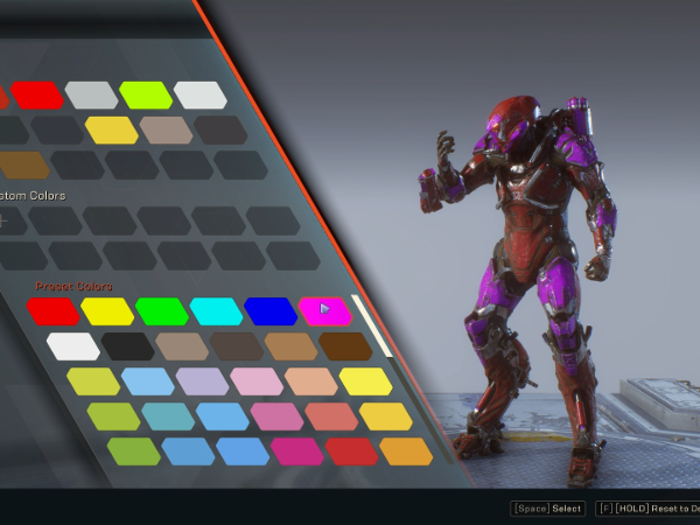
Players choose which javelin they want at the start of the game and can unlock the other three as they progress through the game. Each javelin can be customized to the player's tastes, including different color schemes, armor sets, and weapon loadouts.
Javelins share some weapons, but special abilities vary between the different types of suits. Your choice of javelin largely determines your playstyle, and the other weapons should match your javelins strengths.
New customizable items are unlocked using in-game currency or real-life cash, but don't have an impact on gameplay.
Appreciating the simple joy of controlling the javelins will make your time with "Anthem" more fun.
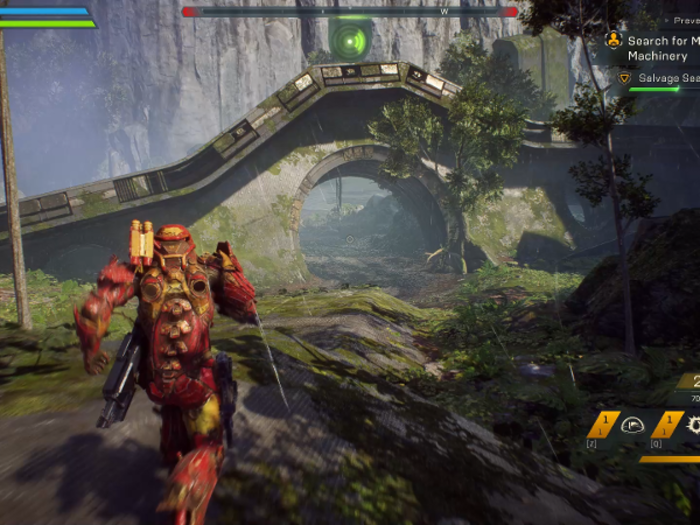
My biggest criticism of "Anthem" might be the lack of appreciation for the javelins.
Players are immediately thrust into the heart of the story with constant fighting from the start of the game. There's very little time spent introducing players to the simple fun of the javelin, whether its the basic mechanics of flying, or the massive free-play environment.
"Anthem" often feels like it's too focused on creating "deep gameplay" rather than enjoying the fun that's on the surface.
Whether you're traveling by land, air, or water, "Anthem" has beautiful environment. Players spend most of their time exploring the world in their javelin.
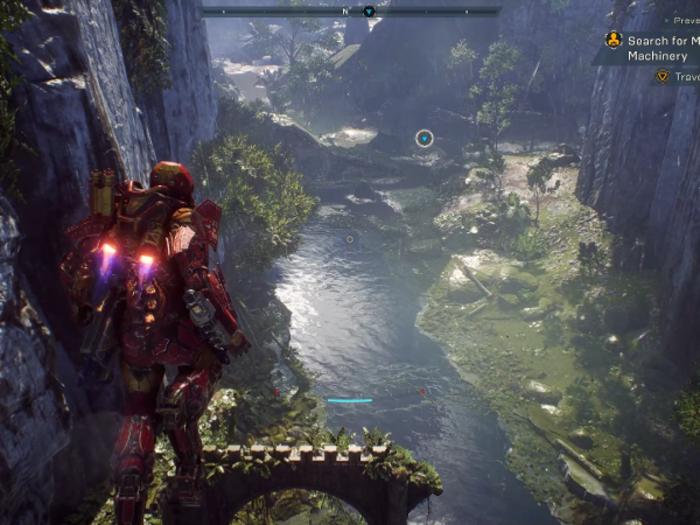
At the core of Anthem is exploration; players take on a variety of missions across a large, open-world map. Missions and challenges on the map are essential for player progression, and each successful expedition will bring new unlockable items and resources.
Different objectives will take players to new environments like underground caverns and sunken ruins below the water. Learning to use your javelin to navigate the varying terrain is a big part of the fun, though you'll eventually come across hostile monsters and enemy soldiers.
Missions will lead you into combat against monsters and enemy soldiers, and the javelins have a variety of abilities to take them down.
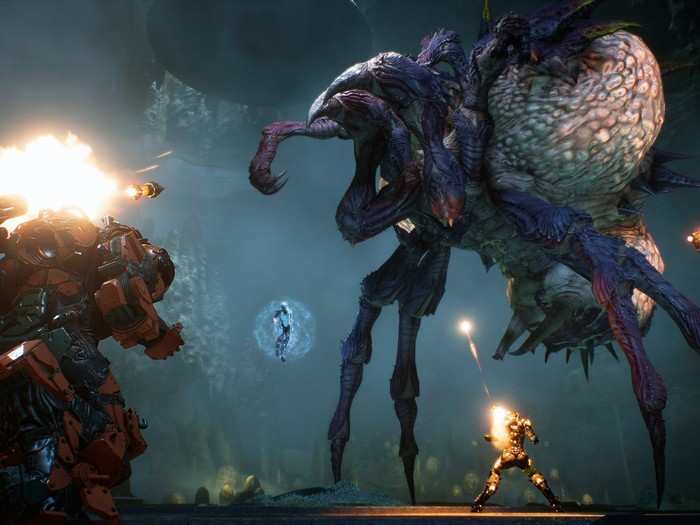
The javelins really shine in combat. Players can make full use of their mobility options and weapons, and the mechanized suits feel fast and powerful from the start of the game.
Whether you choose to hover in mid-air and rain bullets down on an enemy, or use your special abilities to bring the fight up-close and personal, controlling your javelin in battle feels truly exciting.
While the javelins feel strong in combat, the enemies rarely feel like they're up to the challenge, even when playing on hard difficulty.
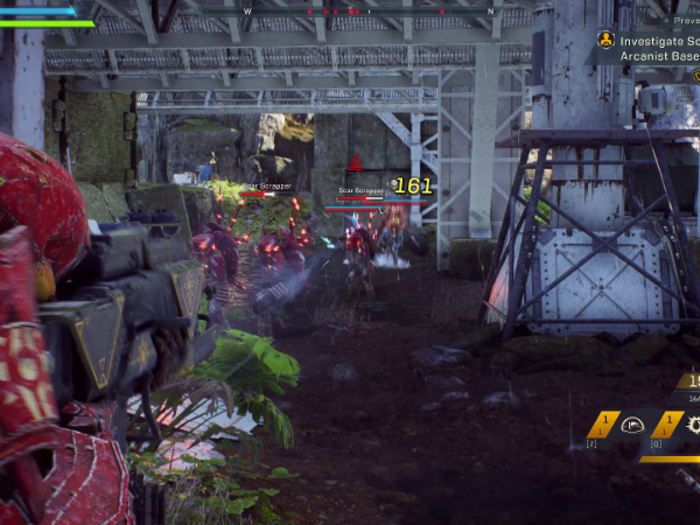
While the javelins are well equipped to handle enemies, there's little variety to be had across the game's missions. The vast majority of missions have players unloading into waves of the same types of enemies, and whether you're shooting at monsters or soldiers, they rarely seem to react.
Strong enemies may carry a stronger shield or have special attacks, but the enemy AI will rarely be forced to consider its strategy. It's a shame too, because BioWare took the extra time to add elemental with combo affects into the battle system, but they rarely feel important in battle.
Enemies presented very little challenge, even when playing on the hard difficulty from the start of the game.
"Anthem" is built for four-player squads; the game will automatically put you in a group for missions.
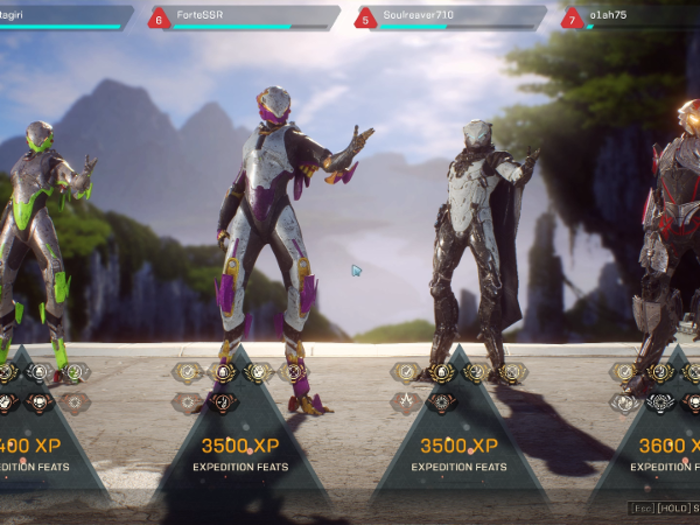
"Anthem" is designed to be played online with four players. The game will automatically match you up with three other players when you deploy on a mission, and will issue a stark warning if you try to play alone in a private game.
Most missions are easy enough to play alone on normal, but if you play with a squad you'll get extra items and other bonuses to make the game move along quicker. If you plan on playing "Anthem" for a while, expect to spend the majority of that time playing in groups online.
Unfortunately, "Anthem" forces you to stick close to your group, preventing solo exploration when you're on a mission.
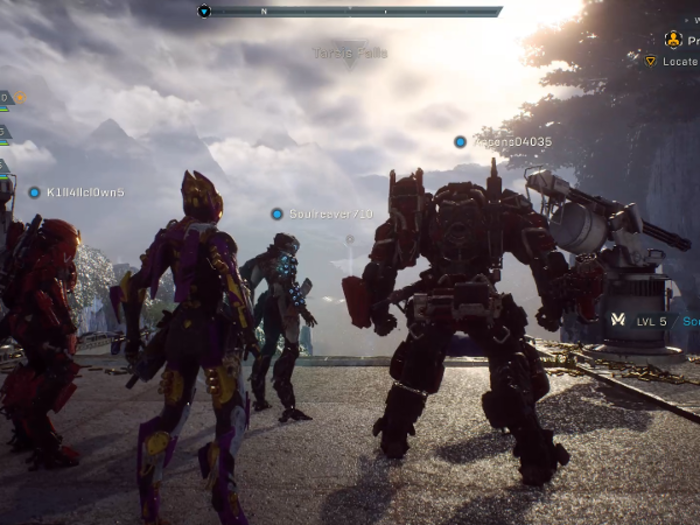
While the cooperative play isn't bad, the mechanics force all four players in the party to travel near each other, leaving little time for exploration. If you lag behind while taking in the sights, or an aggressive player rushes ahead in the mission, "Anthem" will trigger a load screen and teleport you closer to the other players.
It can take a while to load the game's huge environments, so when "Anthem" forcibly tethers players together, the subsequent loading screens lead to a bunch of unintentional stops in the pace of the game.
The balance between cooperative play and exploration presents a big problem for "Anthem."
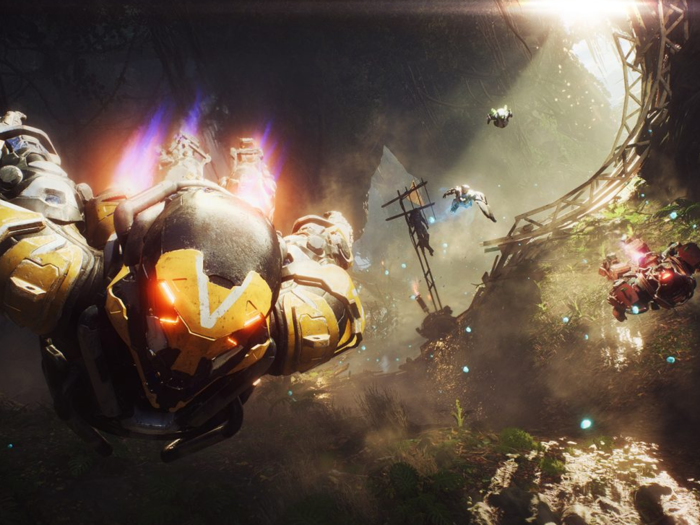
Forced tethering presents a large problem for the game – one of "Anthem's" selling points was the explorable world, but individual players have little control over the course of the mission when they're playing in a group. The end result usually leads to players racing between check points to avoid being left behind on missions, rather than taking time to enjoy the game's wonderful scenery.
With enemy AI not putting much of a fight, teamwork in "Anthem" is more about shooting objectives as a group than any meaningful kind of strategy or tactics.
Most of "Anthem's" story is told in Fort Tarsis, the hub city you visit between missions.
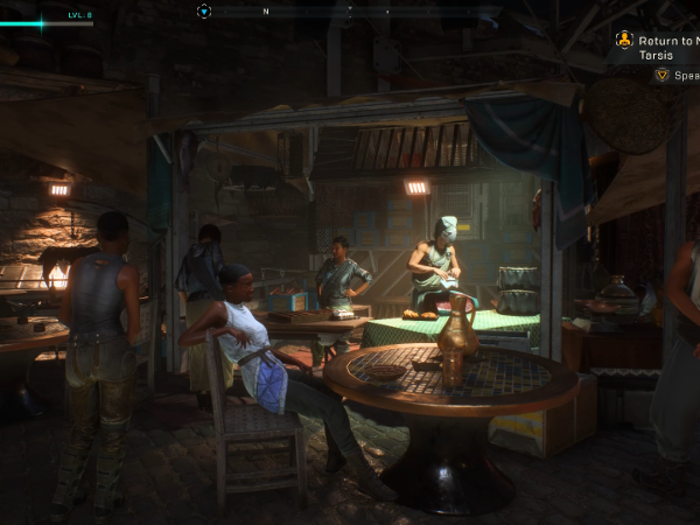
When you're not out on missions, you'll return to Fort Tarsis, the hub city that serves as a home base for the game's characters. Players collect missions from different characters around the city and learn more about the game's story during each visit.
The camera switches from third person to first person when you visit the fort, so you can no longer see your character while walking around.
Most visits to Fort Tarsis will have you wondering how soon you can take off again.
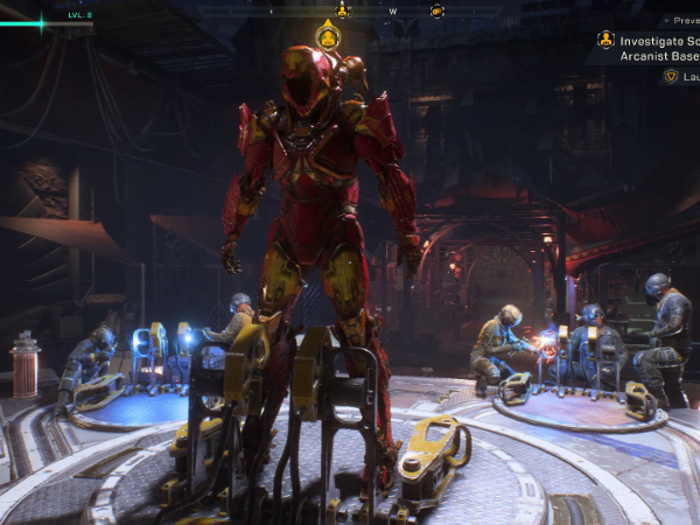
Your first few visits to Fort Tarsis are primarily filled with large story dumps; characters spend a lot of time explaining why you're going on all of these shooting missions, and try to drum up some history around why your flying suits are so special.
Most of it is pretty forgettable, if only because the cutscenes and conversations in Fort Tarsis (and maybe even the entire city) largely feel disconnected from the actual gameplay.
BioWare's solid character writing feels disconnected from the gameplay and has been stripped of its value.
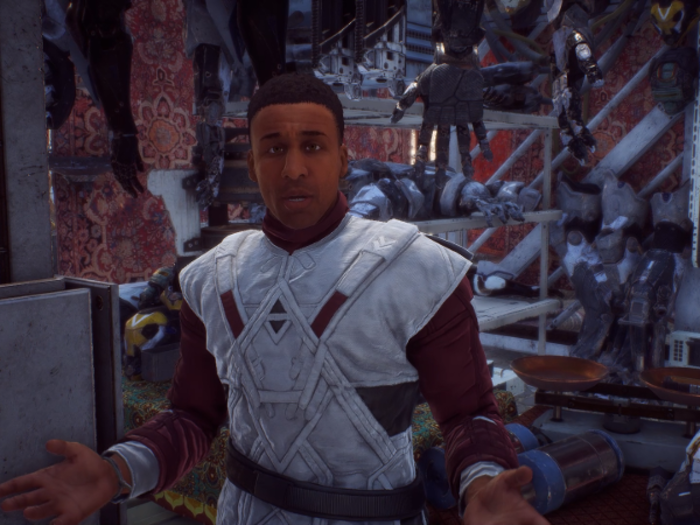
Before "Anthem," BioWare's previous games were defined by their storytelling and characters. Dialogue choices in conversations with non-playable characters in the worlds of "Mass Effect" and "Dragon Age" would impact the story and build ongoing relationships.
This is not the case in "Anthem." While there are still conversation choices, they don't significantly impact the course of the game, and few of the characters you talk to have a real bearing on the story. Even when "Anthem's" dialogue feels fresh, it feels like its been stripped of its value.
"Anthem" is a solid game at it's core, but it may take some time before it's fun for everyone.
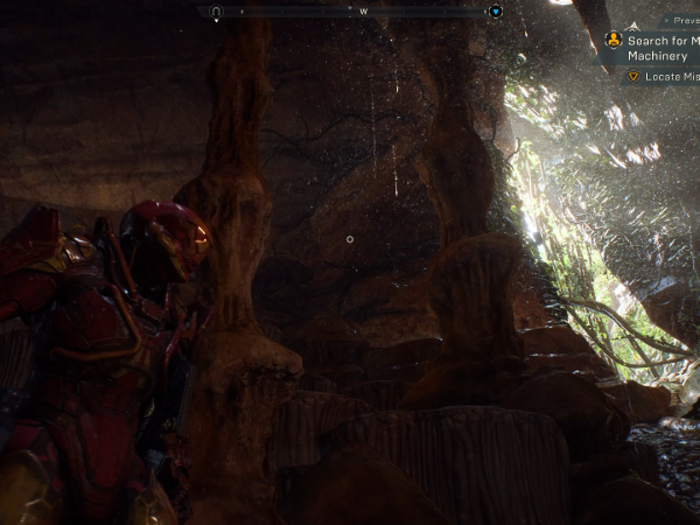
As a game in the "loot shooter" genre, "Anthem" is designed for players to continue playing for months or even years to come. Weekly updates will bring new content to the game, but can also address player concerns with progression, difficulty, and even the tethering on missions.
The question is whether "Anthem" can maintain a healthy enough community to be sustainable in the long-term. As it stands, the game is clearly designed to be played in four-player groups, a potential turn-off to dedicated players who would prefer not to play with strangers.
"Anthem's" future could be promising, but BioWare needs to be proactive about improving the game.
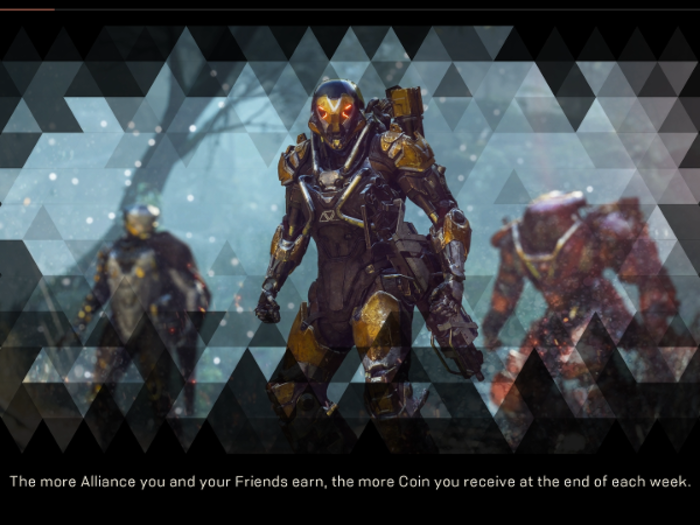
"Anthem" and its javelins are still an exciting concept, and the game still holds some potential post-release, but the developers will need to be proactive about improving the game post-launch. Numerous players on consoles and PC have already reported issues with loading and desyncs as a result of the player tethering.
BioWare has committed to making quality-of-life changes as "Anthem" continues to grow, and hopefully those changes prevent players from jumping ship after a relatively stale launch.
Popular Right Now
Popular Keywords
Advertisement